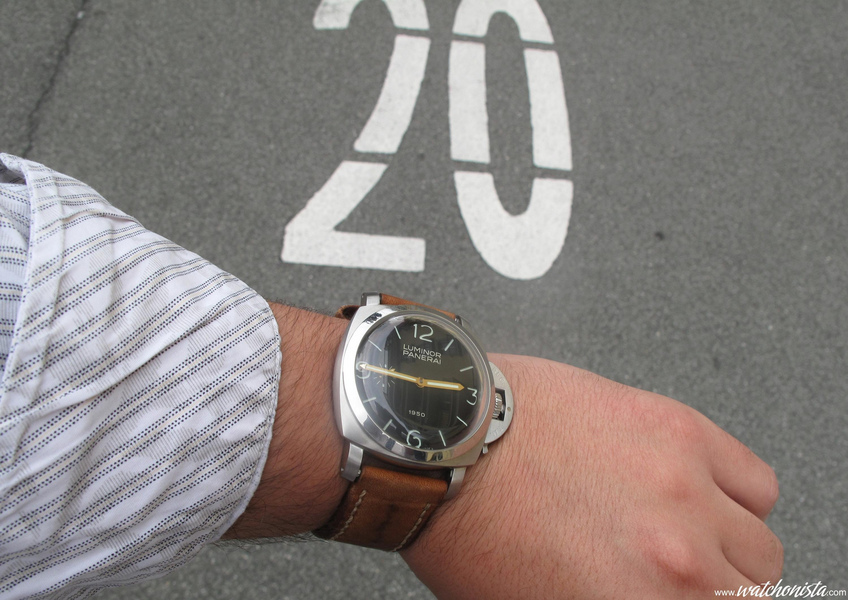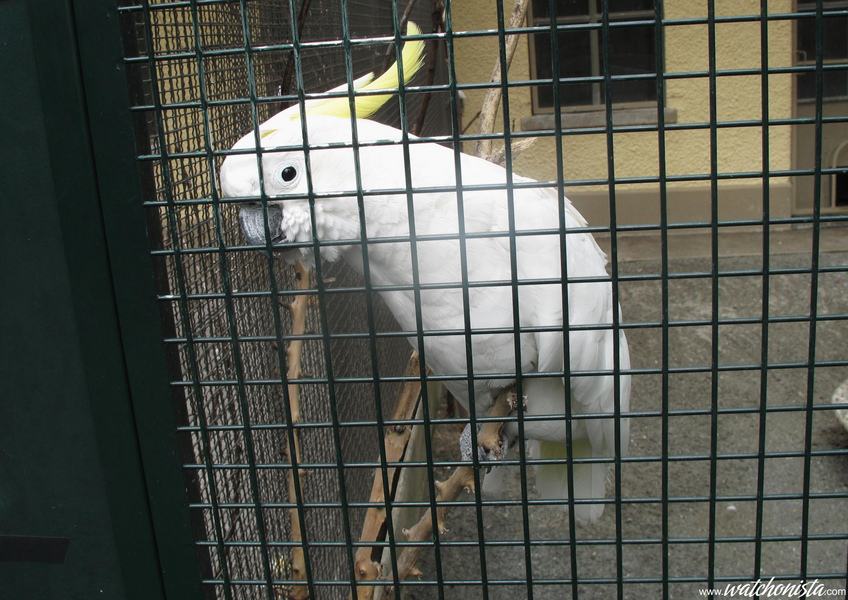Panerai PAM127 1950 "Fiddy", rewiew & analyse.
The PAM127 is the most mythical PAM of the Richemont years, cheaper than the PAM203, more typified than the PAM232, more bestial than the PAM249, it imposed itself, not without difficulties, as the sexiest PAM in the heart of the «Usual Paneristi».
On W: https://www.watchonista.com/panerai/watches/luminor-1950
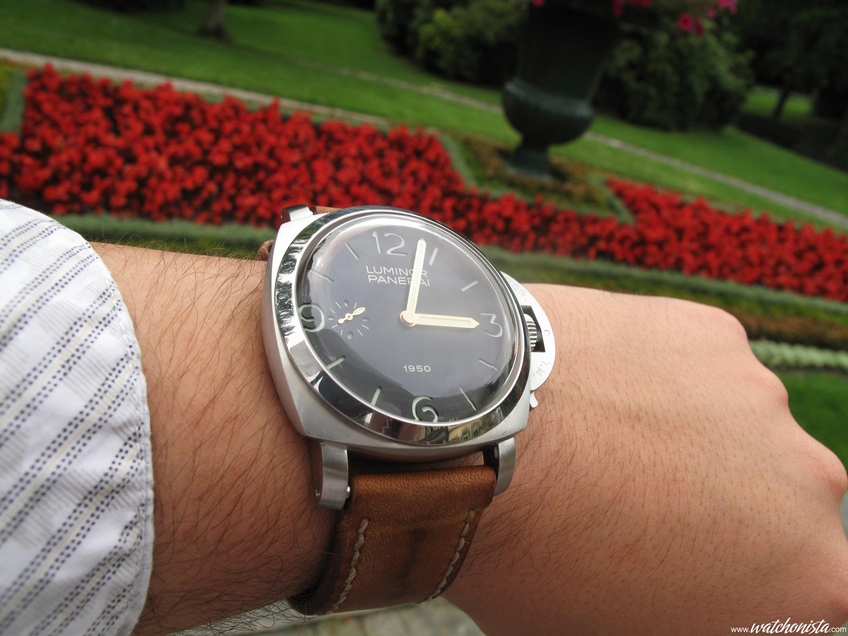
The Panerai PAM127 "Fiddy" is the watch which will drive the first serious wedge into Bettarini Luminor design from the «Pre-Vendôme» years. An attempt to replicate the Luminor 6152 from the 50’s-60’s, it will revisit the main characteristics of the vintage Luminors.
If the big domed sapphire impressed the whole field at the presentation of this model, it is not this feature of the PAM127 that made history.
It is the return to the ogival middles, akin to those of the Radiomirs, out with the straight middles, to give way to a kind of quaint elegance, a salvation design that lightens the look of this big watch (47mm instead of the usual 44).
Consequently, this move somewhat played by chance (at that time, Panerai didn’t have a definite strategy for the vintage cases), will enable the brand later, in 2009-2010, to free itself from all those who had copied the Bettarini pillow cases with straight built.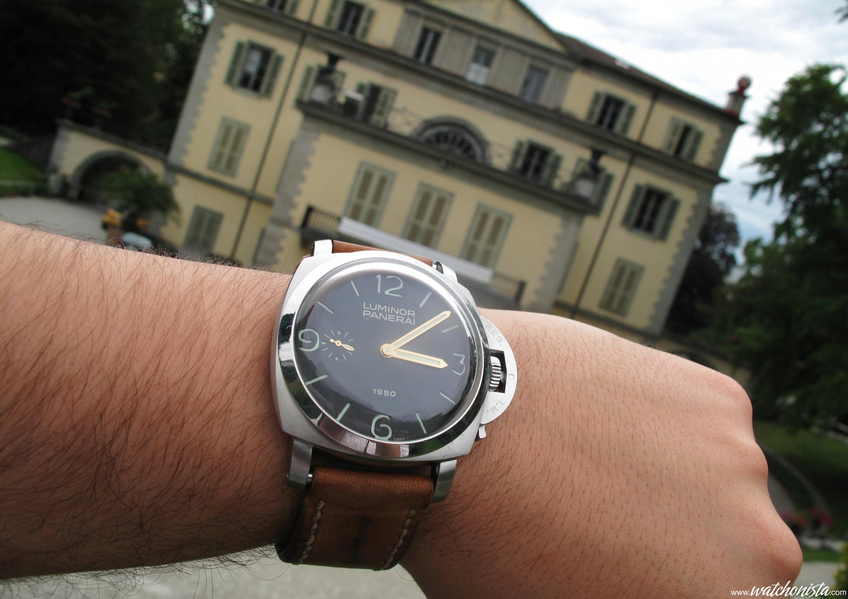
Even more than Audemars with its ROO, Panerai imposed the 44mm as the standard size for sports-watches, propelling the average size of Helvetic watches a few millimeters further.
This unexpected success (unexpected by the Officine, because sociologically, the market was expecting big watches), forced Panerai to normalize the 47mm, in order to remain an exclusive niche brand (the overproduction from 2008-2009 having been a semi-failure). This normalization is obvious, as the SIHH2011 presents 8 watches out of 15 in 47mm. Therefore, as if in resonance with Angelo Bonati’s declarations a few years ago, the OP increases its income without sullying itself by over-producing.
Blue Rover vs blue Ferrari!
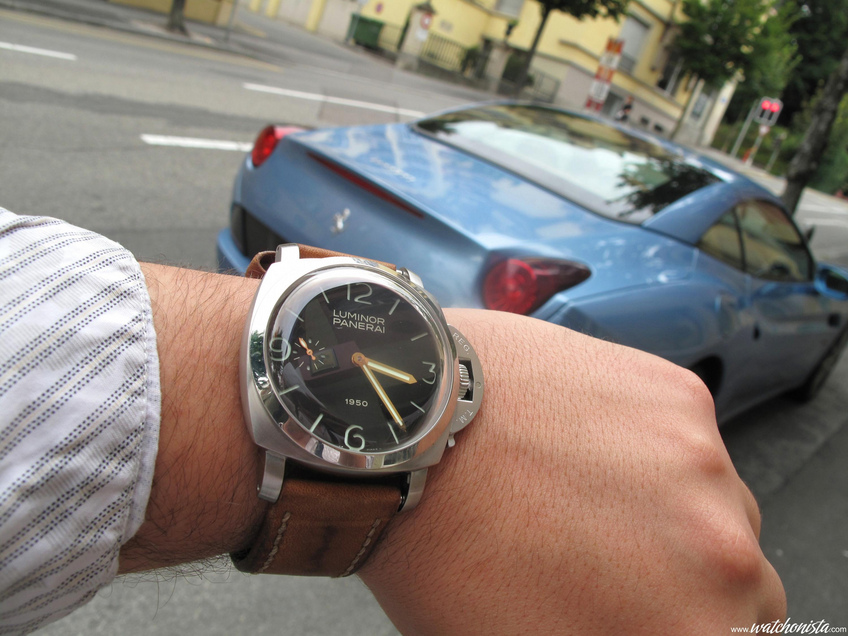
After a difficult start, priced very high, impaired by «soldier photos» that didn’t help it, powered by a Unitas that devalued the watch in the eyes of forum inquisitors, squeezed into a 47mm case, sold for almost 7000€, it was relatively unsellable during the first months.
Its real commercial success, on the second hand market, followed the success curves of the PAM203 and PAM233. The prestige of the PAM203 made the PAM127 more desirable. And the more «mass market» character of the PAM233 constituted the missing link, enabling the generalist watchmaking lovers to understand the passion of the «hardcore Panerai» enthusiast.
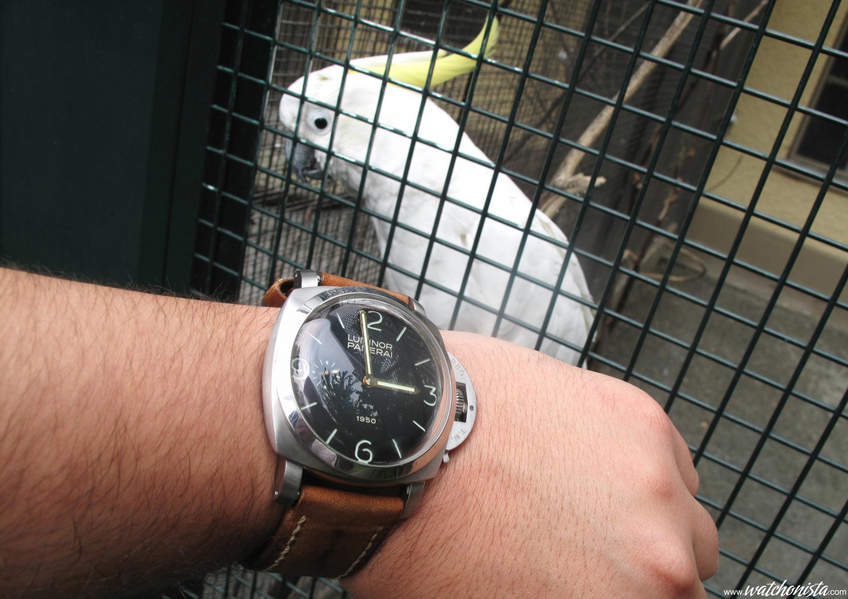
Once everybody had understood at last, the values took off, the watch doubling its catalog price in less than 3 years. Surely, the prices had only reached a x2 ratio, far less than the x5 achieved by the PAM203, but the values of the PAM127, with 1950 copies produced (plus the possible OOR), were far less artificial that those of a PAM203, with less than 200 copies produced, including the PAM267.
Even worse, its right-handed fraternal-twin, the PAM217, with also 1950 copies produced, peaked at the same price levels.
Finally, for a whole edition of around 4000 copies, including the 127, the 217 and the miscellaneous OOR, the astonishing values describe better than any comment, the level of desire stirred by this timepiece.
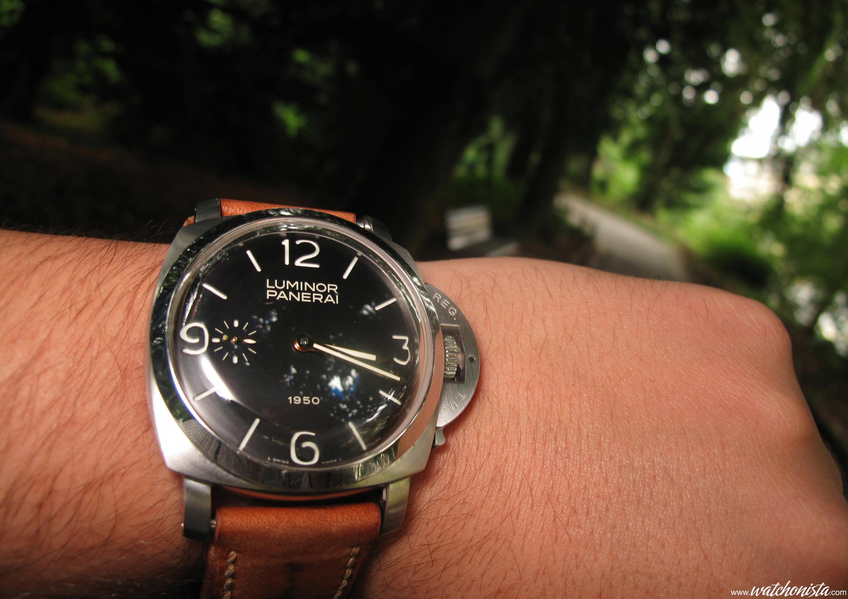
In details, it is a rarewatch, too expensive (for my budget…), which is too seldomly seen out of the vaults, an unfortunate but unavoidable consequence of an overvaluation.
Thus, this watches are difficult to photograph, a collector from WatchOnista having been kind enough to lend me his copy. With only one hour and a half to try it, I didn’t have time to set up a «studio shooting».
With a beauty like that on one’s wrist, one plays a pimp like a train ticket collector during a right wing election evening.
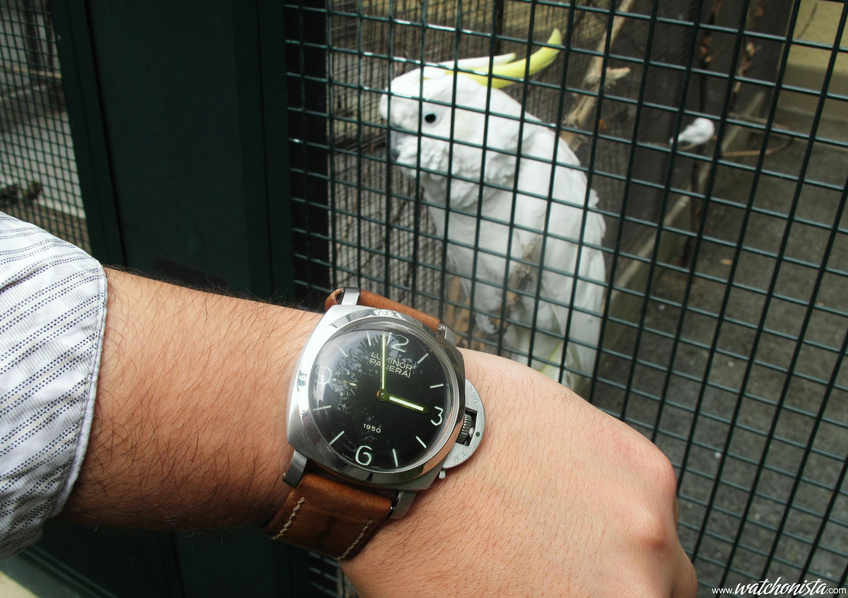
I’ve already had the opportunity to wear the 127 of EDI, during the Paneristi.fr function on the houseboat, but the circumstances were unfavorable, with the impossibility to write a worthy piece.
The first surprise when wearing it is its weight: without weighing « a ton of bricks », its weight is close enough to that of my ex-PAM285 «Subzilla». Made of stainless steel rather than of titanium, with a double-sapphire almost as dense as titanium but more voluminous, it finally makes sense.
The second surprise is its relative discomfort. Related to the wristband? Related to the position of my wrist? Attitudes worthy of a Chinese contortionist, needed in order to avoid reflections on the pictures.
The third is the volume of the beast: if the Radiomir 47mm can be worn on any wrist, thanks to the very specific shapes of the wire-lugs and to a very thin case, it takes a very stocky build to avoid the «Chicken Wrist» syndrome with the Fiddy.
Finally, the number of photos available sully this watch: having seen it so often , one doesn’t understand it anymore, and the thumb rule that advises people to try a watch before talking about it seriously, is truer than ever.
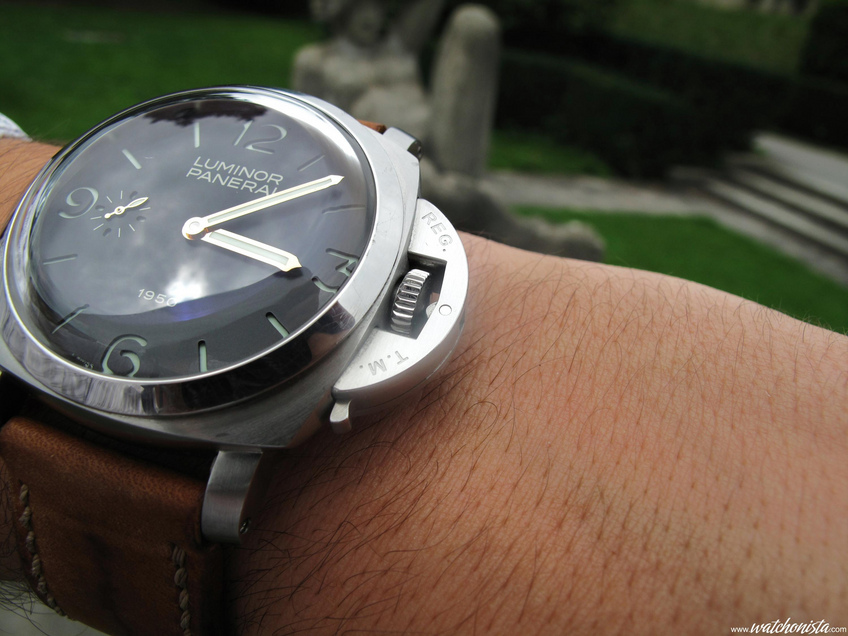
A surprising fact when you wear it, as opposed to when you see it in a photo, is the font, perfectly vintage, it brings a lot to the character of the PAM127. Inversely, the RTFM-like«1950» disappears under the sapphire’s reflections. The rest of the dial is forgettable, since like the «1950», the small second hand is almost invisible when the watch is worn. The black dial stands out in sharp contrast with the theme of the timepiece, I would have preferred it in «chocolate».
Talking about the sapphire, it is a photographic hell, but its rendering in real life is far different; The eye adapts itself very well to the reflections, the big golden hands are efficient, and the watch remains ultra-legible. The sapphire’s outline distorts the numbers enormously, making them barely visible (for that matter, they are smaller than on the PAM232). Personally, I love it, it produces a «diving mask» effect, that others find far less attractive, and OP visibly heard them: thus, the next editions of this big sapphire feature far slimmer edges…
Despite the fact that there has been far fancier sapphires since (especially that of my Amvox2), it is nonetheless the detail of finish that made its competitors respect the OP (with a tinge of fear).
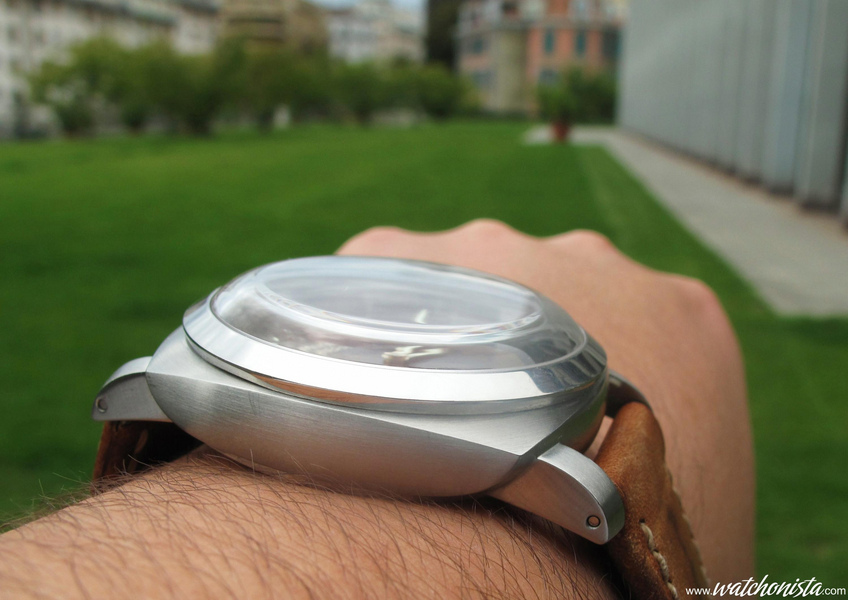
The hands are identical to those of the 232, but seem bigger, since the watch features a smaller aperture.They are also whiter, reinforcing the contrast with the black dial.
The watch features a Unitas 6497 set at 21600v/h, which benefits from the old finish with minted plates, that I prefer to «côtes de Genève», although these are more historical. This finish disappeared from the next edition, confirming the PAM127 as a transitional model.
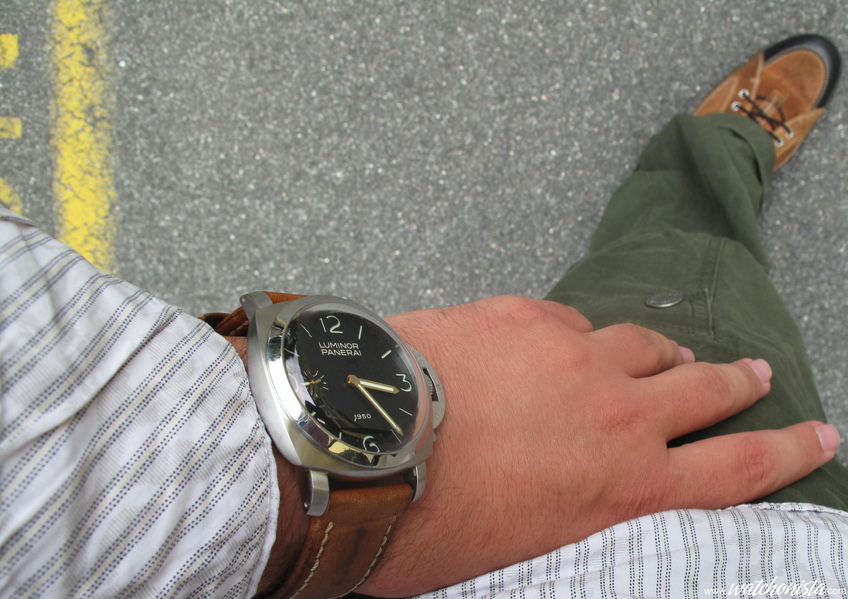
The case remains the key strength of this watch, large, shapely, slim, it combines savagery(wildness) and elegance, accommodating an ultra-thin Unitas. Contrarily to some other 1950 cases from OP, it preserves harmonious proportions. Although its ogival middles are not symmetrical, contrary to vintage cases, it oxygenates the Luminor series in a cathartic way. If the brushed finish is historically a mistake, it is probably that its designers judged that the market wasn’t ready for a 47mm polished case.
The position of the lugs, too straight, contributes undoubtedly to the discomfort felt when wearing the watch, the next versions of 1950 Luminor will feature more sloping lugs.
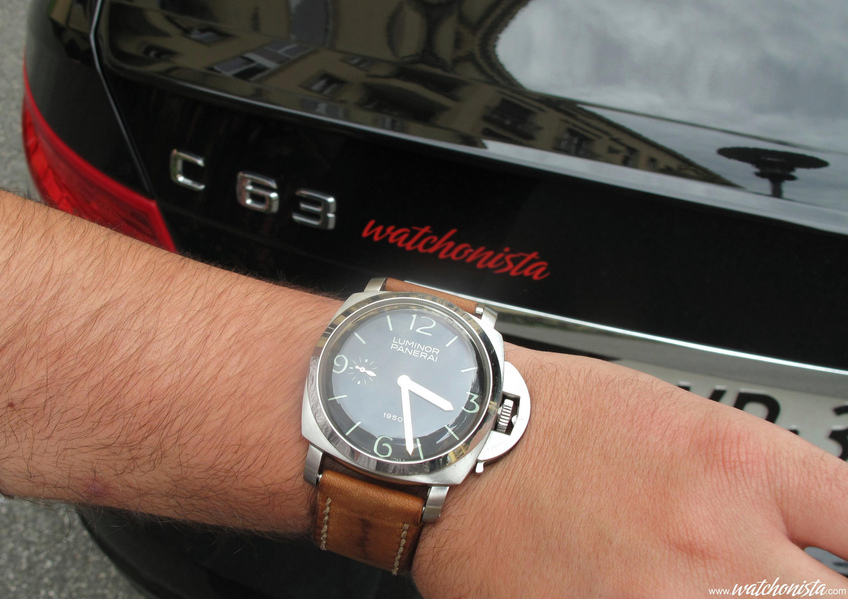
Dry run, painful beginnings, the PAM127 is a prototype in all respects, and like many watches unpopular at the moment of their release, it imposed itself (very quickly, we are in Panerai’s world) as the « must-have » of the Paneristi. Today, even if the risk of sullying the image of the PAM127 by the PAM372 is real (comparative review as soon as I receive my PAM372), it will remain in Paneristic history as a transitional watch, the first of the cruising stage of the Officine, stage confirmed during this SIHH2011.
